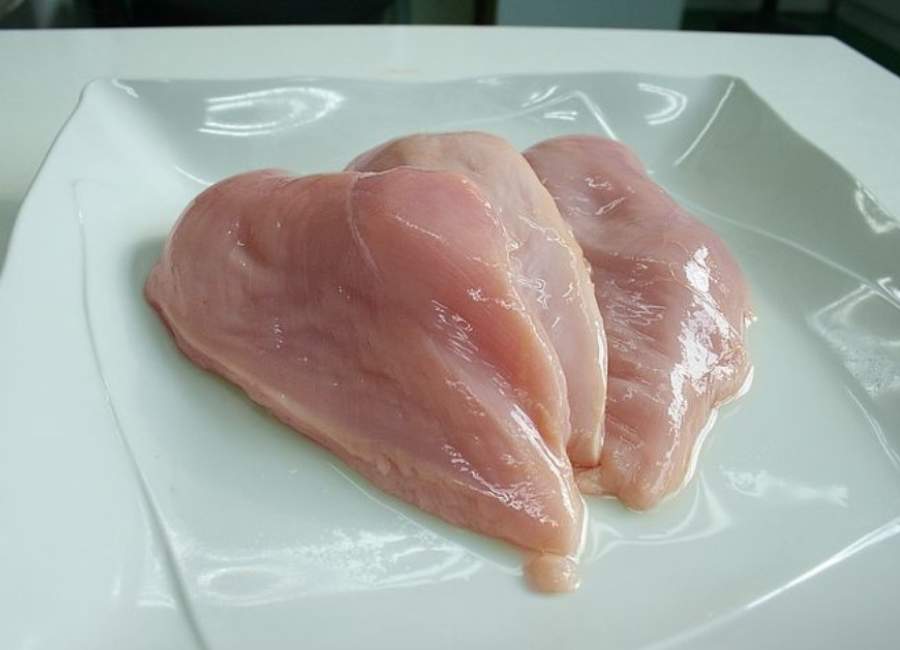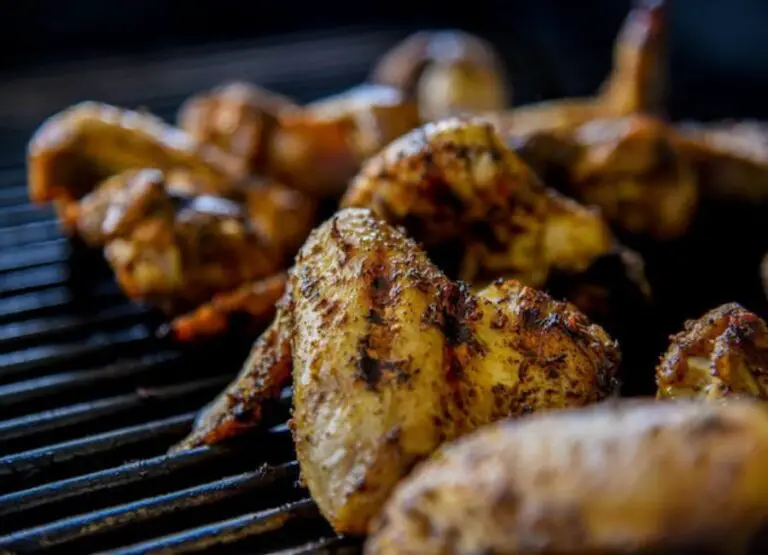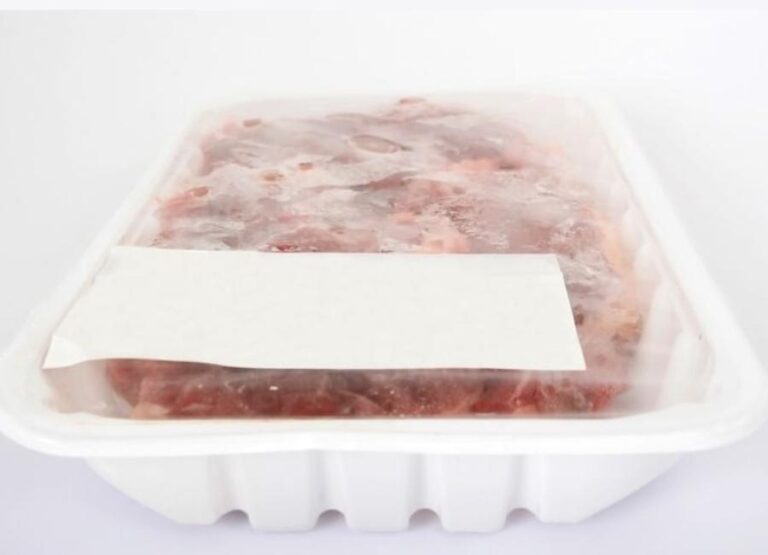9 Signs Of A Bad Raw Chicken Breast [Explained]
In this blog post, we will discuss the signs of bad raw chicken breast, the dangers of consuming it, and the steps you can take to prevent it from happening.
So, let’s dive in and explore the world of chicken safety together!
Bad Raw Chicken Breast
There may be various warning indications that raw chicken breast has gone bad.
The most typical symptom is a change in color. A chicken breast that is still fresh and raw often has a pink tint, but a chicken breast that has gone rotten may have a grey or yellowish cast.
A slimy texture on the chicken breast is a further indication to watch out for.
It may have begun to spoil if it is gooey, slimy, or sticky to the touch.
Moreover, a strong or unpleasant smell coming from the chicken breast can also indicate that it has gone bad.
To lower the risk of foodborne disease, raw chicken should always be handled properly and stored in the refrigerator at or below 40 degrees Fahrenheit.
It is better to throw away raw chicken breast that you believe has gone bad right away to lower your chance of contracting food poisoning.
Signs of a Bad Raw Chicken Breast
Some common signs that a raw chicken breast may have gone bad include:
- Foul smell: if the chicken has a sour, ammonia-like, or rotten odor, it’s likely gone bad.
- Change in color: if the chicken has changed color from pink to gray or yellow, it could be a sign of spoilage.
- Slimy texture: if the chicken feels slimy or sticky to the touch, it has likely spoiled.
- Discoloration of the meat: if any parts of the chicken look green, brown, or gray, it has likely gone bad.
- Viscid or tacky texture: if the chicken’s texture becomes velvety, it is a sign of spoilage.
- Excessive moisture: if there is too much liquid in the packaging, it may be a sign that the chicken is bad.
- Air pockets: if the chicken has air pockets, it may be a sign that it has been stored for too long or at the wrong temperature.
- Wrinkly or shriveled appearance: if the chicken looks wrinkly or shriveled with dry patches, it may have gone bad.
- Abnormal texture: if the chicken feels spongy or gummy, it indicates that it is spoiling or has spoiled.
If you suspect that your raw chicken breast has gone bad, it is best to err on the side of caution and discard it to avoid food poisoning.
Causes of Bad Raw Chicken Breast
Here are some common causes of bad raw chicken breast:
- Bacteria: Raw chicken can contain harmful bacteria such as Salmonella, Campylobacter, and E. coli. These bacteria can cause food poisoning and other health problems.
- Cross-contamination: Raw chicken should be kept separate from other foods to prevent cross-contamination. This can happen when the raw chicken comes into contact with other foods or surfaces, such as cutting boards, utensils, or countertops.
- Spoilage: Raw chicken can spoil if it is not stored properly or if it is past its expiration date. Spoiled chicken can contain harmful bacteria that can make you sick.
- Freezer burn: If raw chicken is not stored in the freezer properly, it can develop freezer burn. This can make the chicken dry and tasteless.
- Improper thawing: Chicken should be thawed in a refrigerator or in cold water, not at room temperature. Thawing at room temperature can promote bacterial growth and increase the risk of foodborne illness.
- Poor Handling: Proper handling of raw chicken is essential to avoid the risk of foodborne illness. It is important to wash your hands thoroughly before and after handling raw chicken, and to use separate cutting boards, utensils, and dishes for raw chicken.
Prevention of Bad Raw Chicken Breast
Here are some common steps to prevent raw chicken breast from going bad:
- Purchase fresh chicken: Always choose chicken that has a healthy pink color and smells fresh. Avoid chicken that feels slimy or sticky.
- Proper Storage: To prevent bacterial growth, store raw chicken in its original packaging or in a leak-proof container on the bottom shelf of the refrigerator. It’s important to keep the temperature of the refrigerator below 40°F (4°C) to prevent the growth of bacteria.
- Proper Handling: Raw chicken should be kept separate from other foods and utensils to avoid cross-contamination. Always wash your hands and all utensils with warm soapy water before and after handling raw chicken.
- Avoiding Temperatures Abuse: Do not leave chicken at room temperature for more than 2 hours. When transporting chicken, keep it in an insulated cooler with plenty of ice.
- Cook Chicken Properly: Chicken should be cooked thoroughly to an internal temperature of 165°F (74°C). Proper cooking kills most of the bacteria that can cause spoilage.
- Freeze Unused Portions: If you cannot use raw chicken within 2 days of purchase, freeze it to extend its shelf life. Use within 6 months for best quality.
- Rotate your Stock: To prevent the chicken from going bad, rotate your stock by using the oldest chicken first.
- Use Safe Water: When washing chicken, use cold running water rather than warm or hot water as warm water can cause the growth of bacteria.
- Proper Disposal: Be sure to dispose of raw poultry properly in order to prevent the potential spreading of bacteria through contact with pets, wildlife, or unsanitary conditions.
Steps to Take If You Consume Bad Raw Chicken Breast
Eating raw chicken might be risky since it could contain hazardous bacteria that can make you ill.
If you accidentally eat tainted raw chicken breast, you should get help right away.
Food poisoning from raw chicken can cause stomach discomfort, diarrhea, and vomiting.
You can address diarrhea in the interim by using over-the-counter medications like loperamide.
It’s crucial to handle and prepare raw chicken correctly to avoid food poisoning.
Use a different chopping board, wash your hands before and after handling raw chicken, and cook it until the internal temperature reaches 165°F.
Learn more about eating undercooked chicken.
Symptoms of Consuming Bad Raw Chicken Breast
Food poisoning, which can result in symptoms including diarrhea, vomiting, stomach cramps, and nausea, can be brought on by eating contaminated raw chicken breast.
Fever, cramping in the abdomen, and bloody stools are possible further symptoms.
To prevent these unpleasant diseases, it’s crucial to handle and prepare chicken correctly.
The chicken may have gone bad and should not be eaten if it has a strange color is slippery or smells unpleasant.
Get medical help if your symptoms are severe or if they last for longer than a few days.
Learn more about cleaning the cutting board after cutting raw chicken.
Frequently Asked Questions
Can eating bad raw chicken breast make you sick?
Yes, eating bad raw chicken breast can make you sick as it may contain harmful bacteria such as Salmonella or Campylobacter.
What are the symptoms of food poisoning from bad raw chicken breast?
The symptoms of food poisoning from the bad raw chicken breast may include diarrhea, vomiting, abdominal pain, fever, and nausea.
How long does it take to get sick from eating bad raw chicken breast?
It may take anywhere from a few hours to several days to get sick from eating bad raw chicken breast, depending on the type of bacteria and the amount consumed.
How can I tell if raw chicken breast is bad?
Signs of the bad raw chicken breast include a sour or unpleasant odor, slimy texture, or discoloration. Always check the expiration date and use-by date before consuming.
Can cooking bad raw chicken breast make it safe to eat?
No, cooking bad raw chicken breast may not make it safe to eat as some harmful bacteria may survive at high temperatures.
It is recommended to properly handle and cook poultry to avoid food poisoning.
What is the best way to handle raw chicken breast to avoid food poisoning?
The best way to handle raw chicken breast to avoid food poisoning is to keep it refrigerated and separate from other foods, wash your hands and surfaces thoroughly before and after handling it, and cook it to an internal temperature of 165 °F (74 °C).
Conclusion
There is no doubt that eating bad raw chicken breast may seriously harm your health.
Consuming chicken that is undercooked or rotten poses substantial and actual risks.
The hazards are many and include everything from viruses like avian influenza to bacteria like Salmonella and Campylobacter.
Hence, if handling or preparing chicken, exercise caution.
Don’t jeopardize your health in any way.
Get a meat thermometer, and before serving, make sure the chicken has reached an internal temperature of 165 °F.
Keep in mind that chicken safety comes first!
References
Medicalnewstoday. Eating raw chicken: Risks, treatment, and safety tips
Clevelandclinic. What Will Happen if You Eat Raw Chicken? – Cleveland …
Foodnetwork. How to Tell If Chicken Is Bad | Cooking School | Food …




![Can You Eat Raw Turkey [Answered]](https://foodcreeks.com/wp-content/uploads/2023/02/Can-You-Eat-Raw-Turkey-768x555.jpg)
![How Long Can Uncooked Turkey Sit Out [Answered]](https://foodcreeks.com/wp-content/uploads/2023/03/How-Long-Can-Uncooked-Turkey-Sit-Out-768x555.jpg)


